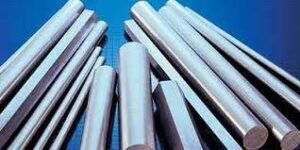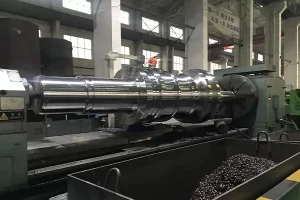Tool Steel for Food Processing Equipment: Hygiene and Corrosion Resistance
Introduction
Tool steels are essential materials utilized throughout the food processing industry for fabrication of machinery, tooling, dies, molds, conveyors, and other critical components. The food production environment imposes distinct demands including cleanliness, corrosion resistance, high hardness, strength, and wear performance. Selecting appropriate stainless or high alloy tool steel grades enables food processing equipment to thrive under these stringent requirements.
This article explores the needs of food manufacturing environments and leading tool steel selections, designs, treatments and coatings that optimize hygiene, corrosion resistance, and durability for reliable, long-lasting food production performance. With their well-balanced capabilities, tool steels will continue serving as indispensable materials enabling efficient, sanitary food processing.
Demanding Needs of Food Processing Environments
 Food processing equipment must withstand:
Food processing equipment must withstand:
- Constant cleaning with sterilizing chemical agents
- Prolonged exposure to food acids and salt brines
- Abrasive wear from food materials like grains and chocolate
- High pressures forming and ejecting parts from molds
- Elevated temperatures during cooking, canning and pasteurization
- Impact and fatigue stresses from high speed cyclic machinery
- Biological contamination risks from bacteria like listeria and salmonella
These aggressive conditions demand optimized tool steel solutions.
Key Tool Steel Performance Requirements
To withstand food plant environments, tool steels must deliver:
Corrosion Resistance
Stainless steel compositions containing chromium, nickel and molybdenum resist corrosion from prolonged chemical, acid and brine exposure.
Hardness
Sufficient hardness between ~HRC 45-55 provides abrasion resistance without being excessively brittle and prone to fracture.
High Temperature Strength
Tooling must maintain strength and hardness during elevated temperature processes to avoid wear or distortion issues.
Thermal Stability
Minimal dimensional changes are essential when equipment undergoes repeated heating and cooling cycles during cleaning and production.
Toughness
Adequate fracture toughness prevents tool failure that could contaminate food products with metal debris.
Wear Resistance
Frequent contact with abrasive foods necessitates excellent wear performance to maximize tool and component longevity.
Non-Magnetic Grades
Ferritic tool steels are avoided to prevent equipment interference with metal detectors used to check for foreign contaminants.
With the proper balance of these properties, tool steels satisfy the stringent but critical needs of food production environments.
Leading Tool Steel Grades for Food Processing
Preferred tool steel selections include:
400 Series Stainless Steels
Most widely used grades thanks to good corrosion resistance paired with reasonable hardness and cost. Common alloys are 416 and 440C.
300 Series Stainless Steels
Offer optimal corrosion protection but lack hardness for wear resistance. Best reserved for non-machining food contact surfaces.
17-4 and 17-7 Precipitation Hardening Stainless Steels
These alloys provide further enhanced corrosion resistance plus high strength and hardness capability through precipitation strengthening heat treatments.
Mold Steels Like P20
Affordable, machinable grades for moderate temperature food molding and forming tools requiring a balance of hardness, toughness and durability.
Maraging Steels
Superior strength and utmost corrosion resistance ideal for food handling robots, conveyors and precision components needing the best contamination protection.
High Alloy Ni-Cr-Mo Grades
Where more extreme corrosion challenges exist, highly alloyed nickel-chromium-molybdenum tool steels prevent deterioration.
Careful selection tailored to the specific food production processes and service conditions optimizes overall performance.
Critical Equipment Design Factors
In addition to steel grade, tool steel food machinery component designs also impact performance:
Easy to Clean Surfaces
Polished finishes with minimal pockets, cracks or crevices prevent bacterial collection during cleaning. Smooth surfaces speed draining and drying.
Enclosed Lubrication
Internal oil or grease pathways avoid external contamination. Lubricant leaks causing slippery safety hazards are also prevented.
Rounded Corners and Edges
Eliminating sharp internal corners on food dies, molds and conveyors enhances cleanability while preventing stress concentrations.
Modular Construction
Individual removable tool steel parts, inserts and replaceable wear surfaces simplify maintenance and replacement when wear eventually occurs.
Allergy Prevention
Avoiding allergenic elements like nickel where possible prevents food contamination that could trigger customer reactions.
Specialty Alloys in Food Contact Areas
Maximizing corrosion protection for food contact regions through added molybdenum or nickel prevents metal ion leaching.
Innovative designs enhance sanitation, safety, maintenance, and contamination prevention.
Machining and Fabrication Methods
Producing food machinery components from tool steels involves:
CNC Machining
Precision tool steel machining operations mill, drill, turn, and tap complex food equipment parts to tight dimensional tolerances and surface finishes.
Grinding
Advanced CNC and manual grinding processes achieve the necessary performance specifications, geometry, and surface polish required.
Laser and Water Jet Cutting
These methods cleanly cut sheet tool steel stock into food machinery parts with minimal distortion to facilitate welding.
Welding and Joining
Controlled tool steel welding maintains alloy composition in joints while minimizing distortion through preheating and stress relieving.
Metal 3D Printing
Additive manufacturing via laser powder bed fusion enables complex tool steel designs with enclosed, sanitary geometries.
Electropolishing
Final electropolishing provides a ultra-smooth surface finish devoid of pits, cracks, or other features that could harbor bacteria during cleaning.
Dedicated fabrication processes allow tool steels to meet the challenging requirements of food production environments.
Heat Treating Considerations

Proper heat treating optimizes food equipment tool steel performance:
Stress Relieving
Prior stress relief annealing eliminates distortion-inducing stresses from machining, grinding, or welding before hardening.
Solution Annealing
Thorough solution annealing ensures complete austenitization for optimal corrosion resistance and hardness capability after quenching and aging.
Quench Process Control
Controlled, interrupted quenching sequences maximize hardness while minimizing dimensional changes, cracks and residual stresses in tool steels.
Low Temperature Tempering
Tempering following hardening improves thoughness and anneals quench stresses but is kept below temperature thresholds that would decrease hardness or corrosion performance.
Precipitation Hardening
Secondary hardening heat treatments for PH stainless steels further boost hardness, strength, and dimensional precision critical for reliable food production.
Effective heat treatment tailoring balances properties needed for food machinery tool steels.
Surface Treatments and Coatings
Surface engineering enhances food equipment tool steel performance:
Passivation and Electropolishing
Processes that form corrosion resistant surface films combined with electropolishing provide maximum stainless tool steel corrosion protection.
PVD and CVD Coatings
Thin, inert PVD or CVD coatings including TiN, TiCN, and DLC minimize adhesion and protect against abrasive wear from food products.
Nitriding and Ferritic Nitrocarburizing
Diffusion treatments harden surfaces and improve wear, friction, and fatigue life of food processing tooling components like forming dies and conveyor parts.
Plating
Electroplated chrome, nickel and molybdenum applied for selected fretting wear applications provide solid lubricity.
Non-Stick Coatings
Fluoropolymer, silicone, and other low surface energy coatings on food molds improve release and cleanup while eliminating sticking.
Surface Texturing
Deterministic micro surface patterns or laser etching enhances tool steel mold cleanability while reducing adhesion of food materials.
Surface engineering enhances the corrosion protection, cleanability, and wear resistance demanded in food production plants.
Conclusion
The success of automated high-volume food processing heavily relies on utilization of tool steels capable of withstanding the harsh service conditions posed by this critical industry. Through careful material selection, component designs, machining methods, heat treatment, and surface enhancements, tool steel components can satisfy the stringent demands of food production environments for maximum longevity, safety, reliability, productivity and profitability. With their well-balanced performance capabilities, tool steels will continue playing an indispensable role across the entire spectrum of food manufacturing processes.
Frequently Asked Questions
What are the most widely used tool steel grades in food processing plants?
The 400 series stainless steels, especially 416 and 440C, see the broadest usage. 300 series stainless, mold steels like P20, and high alloy Ni-Cr-Mo stainless grades are also popular selections.
What causes tool steels to corrode in food plant environments?
Acidic foods, hot salty brines, and cleaning chemicals degrade unprotected surfaces. Insufficient chromium, molybdenum and nickel alloy content also reduces corrosion resistance.
How should food processing tool steels be heat treated?
Careful solution annealing, controlled quenching, and low temperature tempering and/or aging maximizes hardness and corrosion resistance without embrittling the steel or causing distortion issues.
Why must tool steels for food plants have good cleanability?
Polished, crevice-free tool steel surfaces prevent accumulation of food, bacteria, cleaning agents, and other potential contaminants. This maximizes food safety and quality.
What fabrication methods help shape tool steels into food machinery components?
A combination of CNC machining, precision grinding, laser/waterjet cutting and metal 3D printing enables forming intricately designed tool steel food production parts.
How do electropolishing and passivation help food processing tool steels?
These electrochemical surface treatments remove defects and form protective surface oxide films. This reduces corrosion while maximizing cleanability and food safety.
What causes abrasive wear damage to food processing tool steels?
Hard food particles like salt, sugar, grains, and seeds erode unprotected tool steel surfaces. Hardness, toughness, and wear resistant coatings combat abrasion issues.
Why is fatigue strength important for food machinery tool steels?
Cyclic stresses from thousands of daily molding, forming, or material handling cycles can initiate fatigue cracks and tool failure if fatigue strength is inadequate.
How could metal 3D printing benefit food processing tool steels?
Additive manufacturing enables consolidated tool steel assemblies with complex internal geometries ideal for sanitary food production environments.
What recent innovations show promise for advancing food processing tool steels?
Emerging areas include high cleanability surface patterns, solid lubricant electroless nickel coatings, and nanostructured alloys for extreme hardness and wear resistance.

